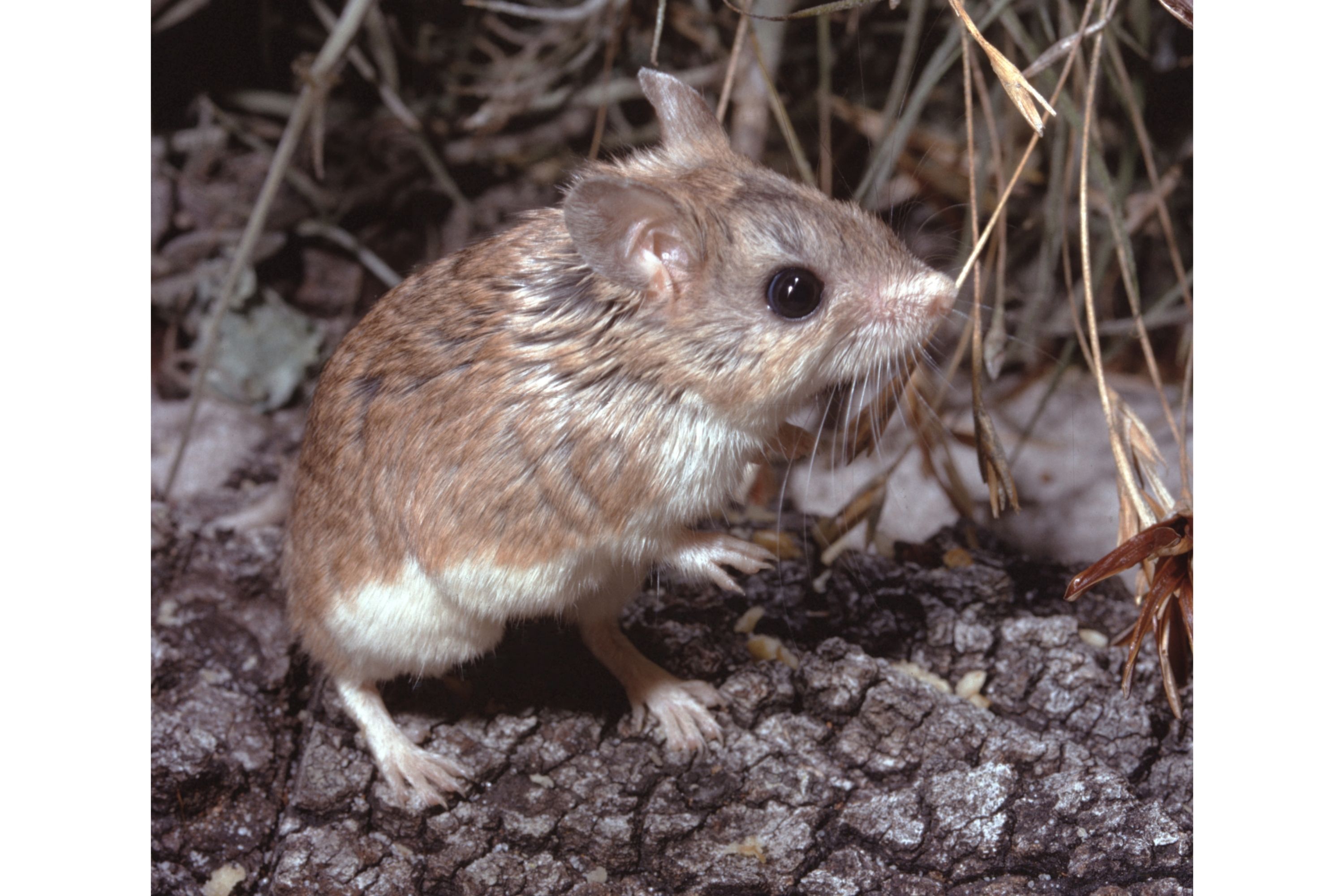Northern grasshopper mouse
(Onychomys leucogaster)

Description
The northern grasshopper mouse (Onychomys leucogaster) is a North American carnivorous rodent of the family Cricetidae. It ranges over much of the western part of the continent, from southern Saskatchewan and central Washington to Tamaulipas in northeast Mexico. The northern grasshopper mouse is found in North America, but primarily in dry areas. They are similar in body size to other mice; on average they are 164 mm (6.5 in) long and about 35 g (0.077 lb) in weight. The tail is most often less than 30% of the total body length, whereas other mice tend to have longer tails adding to long body lengths. The grasshopper mouse is a reddish-black/grey color with white hair on the belly. Unlike most rodents, this one has a mostly carnivorous diet mainly consisting of small insects, other mice, and even snakes; no more than a quarter of its diet is plant-based. This rodent is also nocturnal. Throughout the night, the grasshopper mouse makes high-pitched noises to claim its territory. This grasshopper mouse can be found in prairies with low grass, dry areas, and also pasture lands of the central and southwestern parts of the United States. O. leucogaster has been known to associate positively with black-tailed prairie dogs, possibly due to their preference for disturbed areas, suitable habitat in the form of burrows, or food supply. The northern grasshopper mouse lives in burrows underground, by either digging its own or inhabiting burrows that have been disowned. These mice have a system of multiple burrows, with each burrow serving a different function. The nest burrow is the primary area of activity during the day; since they are nocturnal, they do not need to be in a burrow during the night. To keep moisture in during the day, they close up the opening. A retreat burrow serves for quick escape from predators. Its design is about 10 inches into the ground at a 45° angle. The cache burrow is used for storing seeds. The signpost burrows are small and filled with glandular secretions that mark the boundaries of their territory. All of these burrows are found within a large area of territory. The northern grasshopper mouse has about two or three litters a year consisting of two to seven young, with the average being four. They have a gestation of 32-47 days, and the young are born in either late fall or early winter, between September and February. The male gathers and provides food for the female while she is pregnant and taking care of her young.
Taxonomic tree:







